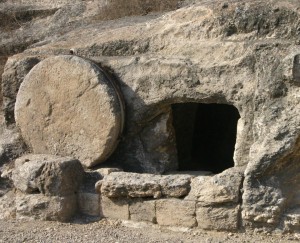
Why does the Gospel of Mark, generally agreed to be our earliest gospel, introduce Andrew as an equal to Simon Peter at the time Jesus calls them both but then drop him from the lime-light for most of the subsequent narrative?
I have always felt a bit sorry for Andrew. He seems to have been elbowed out by the other three, Peter, James and John, whenever Jesus wanted to share something special with his inner-circle. James and John could always be included as brothers, so why was Peter’s brother left out at special events like
- the raising of the daughter of Jairus (Mark 5:37);
- the Transfiguration (Mark 9:2);
- the time Jesus wanted his closest companions with him in the Garden of Gethsemane (Mark 14:33).
Even when Jesus ordained his special band of Twelve he gave James and John a collective title, “Sons of Thunder”, but dropped Andrew to fourth place as if he was no longer kin to Peter.
And Simon he surnamed Peter; And James the son of Zebedee, and John the brother of James; and he surnamed them Boanerges, which is, The sons of thunder: And Andrew, and Philip, and Bartholomew, and Matthew, and Thomas, and James the son of Alphaeus, and Thaddaeus, and Simon the Canaanite . . . (Mark 3:16-18)
So if Andrew was not to play any meaningful role, even as a hanger-on, with Jesus in the Gospel what was the point of him starring in the scene of the very first call?
Now as [Jesus] walked by the sea of Galilee, he saw Simon and Andrew his brother casting a net into the sea: for they were fishers. And Jesus said unto them, Come ye after me, and I will make you to become fishers of men. And straightway they forsook their nets, and followed him. (Mark 1:16-18)
Andrew’s response to Jesus’ call was no less admirable than was Peter’s.
There is one exception after this call where the Gospel does give Andrew a place beside Peter, James and John. For the first time since the opening scenes of the Gospel when Jesus called these four do we see them all performing together:
And as [Jesus] sat upon the mount of Olives over against the temple, Peter and James and John and Andrew asked him privately, Tell us, when shall these things be? and what shall be the sign when all these things shall be fulfilled? (Mark 13:3-4)
I have finally come across an explanation that just might make sense of this and give some well-deserved consolation to Andrew. (Regular readers know I’m currently reading Karel Hanhart’s The Open Tomb and will suspect this is my source. They will be correct.)
Continue reading “Why is Peter’s Brother, Andrew, Overlooked So Much in the Gospel Narrative?”


